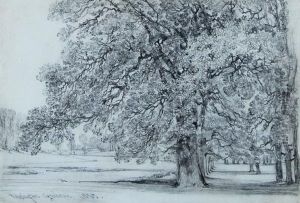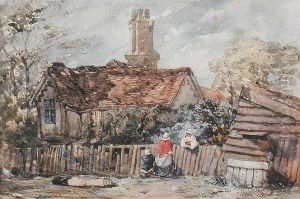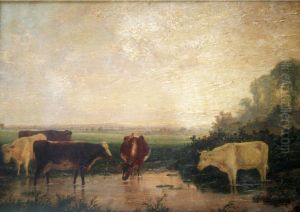William Evans Of Bristol Paintings
William Evans, known as William Evans of Bristol, was an English painter who lived during the 19th century. He was born in 1798 in Bristol, England. Evans is primarily celebrated for his watercolor landscapes, which often depicted the English and Welsh countryside. His works were noted for their attention to detail, use of light, and atmospheric effects.
From a young age, Evans displayed a keen interest in art, and he began his training in his hometown. He was initially apprenticed to a heraldic painter, which likely contributed to his meticulous approach to detail in his later works. Evans soon developed a passion for landscape painting, which would become the central focus of his artistic career.
Throughout his life, Evans was an active member of the art community. He exhibited at the Royal Academy and the Society of British Artists, and he was also a member of the New Watercolour Society, where he exhibited regularly. His work was well-received during his lifetime and he was known for his skill in capturing the varying moods of nature.
Evans's art often reflected the Romantic spirit of his time, emphasizing the beauty and sublime qualities of nature. Although he traveled extensively throughout England and Wales to find inspiration for his landscapes, he maintained a strong connection with Bristol and the surrounding areas, which appeared frequently in his compositions.
Evans’s influence extended beyond his own work, as he taught art to a number of students. Through his teaching, he helped to shape a new generation of artists, passing on his techniques and passion for the watercolor medium.
William Evans of Bristol passed away in 1877. Today, his works are part of several collections and are appreciated by art historians and collectors for their contribution to the British watercolor tradition. His legacy continues to be recognized for its significance in the development of English landscape painting in the 19th century.
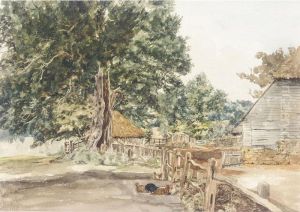

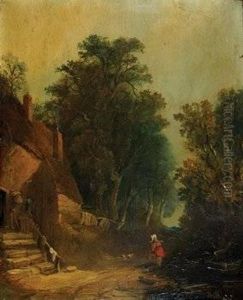
![[view In Snowdonia]](https://www.niceartgallery.com/imgs/568868/s/william-evans-of-bristol-view-in-snowdonia-ac5fc963.jpg)
